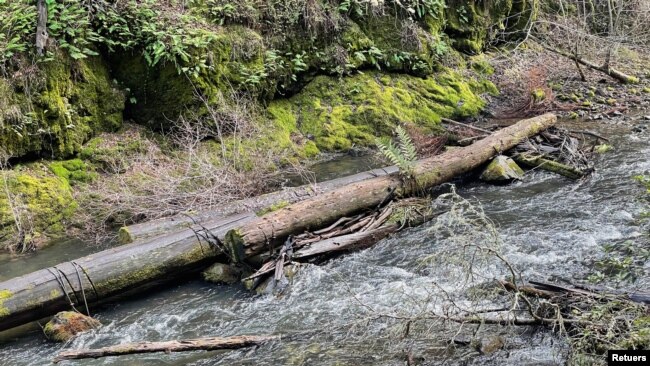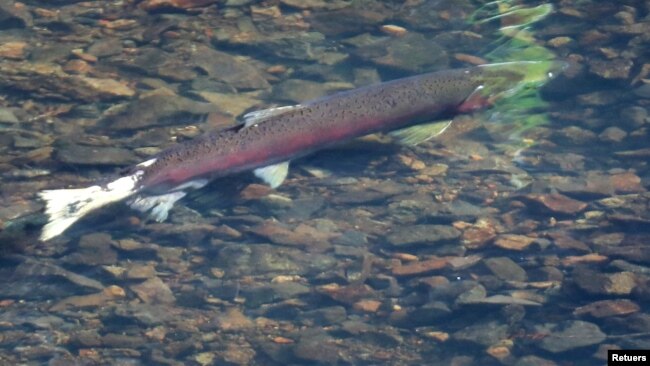A Coho Salmon is pictured in this undated photo. (Photo Courtesy of NOAA Fisheries/Handout via REUTERS)
California, which has suffered from a lack of rainfall, welcomed the arrival of rain and snow late last year.
The precipitation gave farmers and city planners in the western state hope for better days ahead. Wildlife officials say the water also has led to healthier growth in the state’s population of endangered fish called coho salmon.
Records from the National Weather Service show that California received more precipitation from October to December than during the previous 12 months.
California weather officials reported in late December that the snow level in the state’s Sierra Nevada Mountains was 200 percent of its average for that date. The increase is important because the Sierra Nevada Mountains supply nearly one third of the state’s water needs.

Officials said the snow level statewide was 160 percent of its average.
The arrival of rain and snow came in time for the November-to-January spawning season in the Tomales Bay area, north of San Francisco. The precipitation enabled some fish to reach waters near Lagunitas Creek, about 20 kilometers inland.
“We’ve seen fish in places that they haven’t been for almost 25 years,” said Preston Brown. He directs a water conservation program for the Salmon Protection and Watershed Network , or SPAWN.
Experts say some fish have been seen in places where they could not go before. That includes about one-and-a-half kilometers past a place where a dam once existed on San Geronimo Creek. The dam was removed about a year ago.

Weather officials said last year’s precipitation could end up being just a short break in the state’s severe, 20-year drought. The water shortage has made it difficult for officials to keep fish, farms and growing cities supplied with enough water. Experts say the state needs several wet years in a row to refill supplies.
But for now, the salmon are doing well. They are leaving eggs in nests where babies will be born and spend most of their youth. The fish will then swim out to the ocean as adults, later returning to the same area to spawn.
Todd Steiner is the director of Turtle Island Restoration Network, the parent group to SPAWN. He told Reuters news agency the fish like to stay in smaller bodies of water, because “that’s where their survival is the highest.”
Steiner added: “If we give the fish a fighting chance at survival, they will come back.”
I’m Bryan Lynn.
Reuters reported on this story. Bryan Lynn adapted the report for VOA Learning English.
We want to hear from you. Write to us in the Comments section, and visit WWW.VOA-STORY.COM
___________________________________________________
Words in This Story
precipitation – n. rain or snow that falls to the ground
spawn – v. when some animals release or deposit eggs
conservation – n. the act of keeping something safe from harm or from being damaged or destroyed
drought – n. a long period of time during which there is very little or no rain
nest – n. a home built by birds and some other creatures to live in or hold eggs